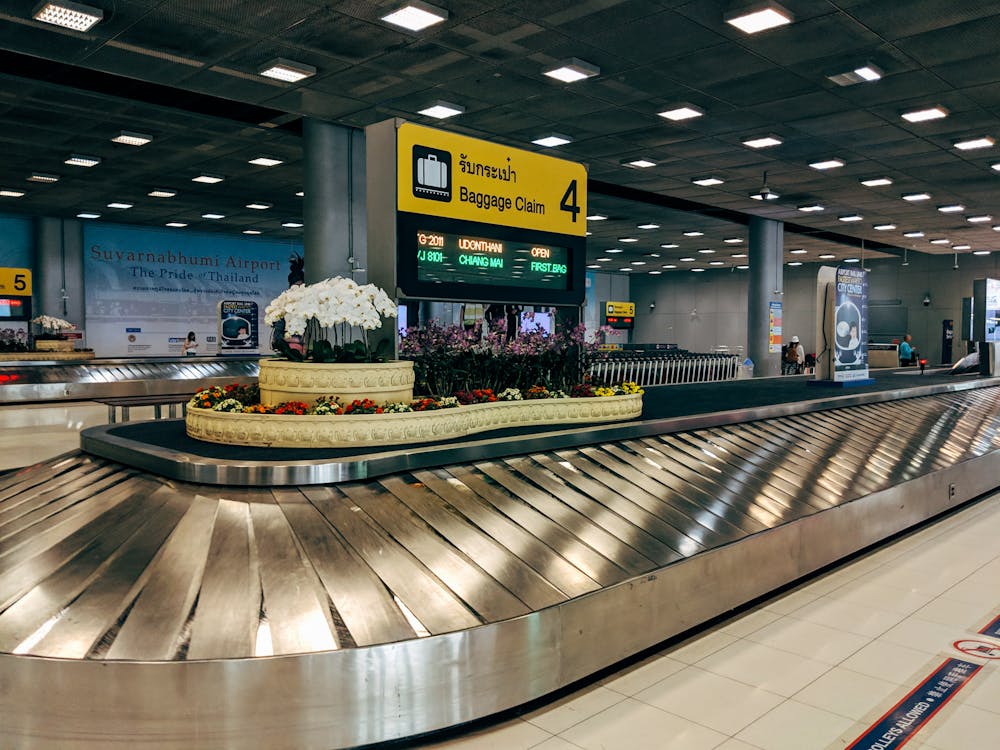Have you ever wondered what happens to your suitcase after you check it in at the airport? The journey is more fascinating (and technological) than you might imagine! Behind the scenes, a complex system of conveyor belts, scanners, and human intervention ensures that your bag reaches its destination. Let’s dive into the hidden world of airport luggage handling and uncover its secrets.
Step 1: The Check-in Process – Where It All Begins
The moment you check your luggage at the counter, your bag embarks on an intricate journey. The airline staff attaches a barcode label to it, containing crucial information such as your flight number and final destination. This barcode is the key to tracking your suitcase throughout the airport.
Some airports have self-service kiosks that allow passengers to print and attach their own tags before dropping off the luggage at an automated conveyor belt. Either way, once the bag is tagged, it’s time for the real adventure to begin.
Step 2: The Conveyor Belt Network – A High-Speed Journey
Once your bag disappears behind the check-in counter, it enters a labyrinth of conveyor belts. In major airports, this network can stretch for kilometers and include multiple sorting stations. Some baggage handling systems transport luggage at speeds of up to 40 km/h (25 mph)!
At this stage, automated scanners read the barcode on the tag, ensuring the bag is directed to the correct flight. If there’s an error or unreadable tag, the bag may be diverted to a manual inspection area where airport staff will intervene.
Step 3: Security Screening – Keeping Flights Safe
Before reaching its designated flight, every checked bag undergoes rigorous security screening. Modern airports use a combination of:
- X-ray machines: These scan the contents of the bag for prohibited items.
- Explosive detection systems (EDS): These sophisticated scanners can detect traces of explosives.
- Manual inspections: If security personnel identify anything suspicious, they may manually inspect the bag.
Contrary to popular belief, TSA (in the U.S.) or other security agencies worldwide have the authority to open checked bags if necessary. If your luggage is inspected, you may find a notice inside informing you about the check.
Step 4: Sorting and Transportation to the Aircraft
Once cleared by security, your suitcase is sorted into the correct baggage cart or container based on its destination. This process is often managed by automated systems that group luggage for each flight. Large airports use specialized vehicles to transport these containers directly to the aircraft’s cargo hold.
Meanwhile, if you have a layover, your bag may need to be transferred between flights. Some airports use automated baggage handling systems that can redirect luggage efficiently, while others rely on human baggage handlers.
Step 5: Loading into the Aircraft – The Final Step Before Takeoff
Baggage handlers (also known as ramp agents) carefully load the luggage into the cargo hold of the plane. The bags are strategically placed to balance the aircraft’s weight distribution. On smaller planes, this task is even more critical for maintaining stability during flight.
If you’ve ever wondered why your bag sometimes arrives last, it could be because it was placed at the bottom of the luggage compartment, requiring more time to retrieve.
Step 6: Arrival and the Unloading Process
Upon landing, the process happens in reverse. Ground crew members unload the baggage from the plane and transport it to the airport’s baggage claim area. If your flight is international, the luggage may go through customs inspection before being released to passengers.
Baggage claim belts are programmed to display the correct flight number, helping travelers locate their belongings quickly. However, if your luggage doesn’t appear, it may have been misplaced, delayed, or sent to the wrong flight.
What Happens If Your Luggage Gets Lost?
Lost luggage is rare but not impossible. Airlines use tracking systems to locate misplaced bags, and most are reunited with their owners within 24 to 48 hours. If your bag goes missing, follow these steps:
- Report it immediately at the airline’s baggage claim office.
- Provide your baggage receipt (the sticker given at check-in).
- Request compensation if necessary, as airlines may cover essential expenses due to delays.
How Technology is Improving Baggage Handling
The aviation industry is constantly innovating to reduce lost luggage incidents. Some advancements include:
- RFID tracking: Airlines like Delta and Emirates use RFID chips embedded in luggage tags, allowing passengers to track their bags via mobile apps.
- Automated baggage handling systems: Airports like Hong Kong International and Amsterdam Schiphol use AI-powered sorting systems for greater efficiency.
- Smart luggage: Some suitcases come with GPS tracking, helping owners locate them in case of loss.
Final Thoughts: A Behind-the-Scenes Marvel

The journey of your checked luggage is far more complex than it seems. It involves a mix of automation, security protocols, and human expertise to ensure your bag arrives safely at its destination. While occasional mishaps occur, airlines and airports continuously refine their processes to make travel smoother and more efficient.
So, next time you check your bag, remember the incredible logistics working behind the scenes to get it to your destination. Have you ever had an interesting experience with your luggage while traveling?
